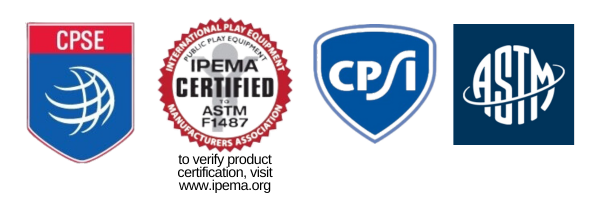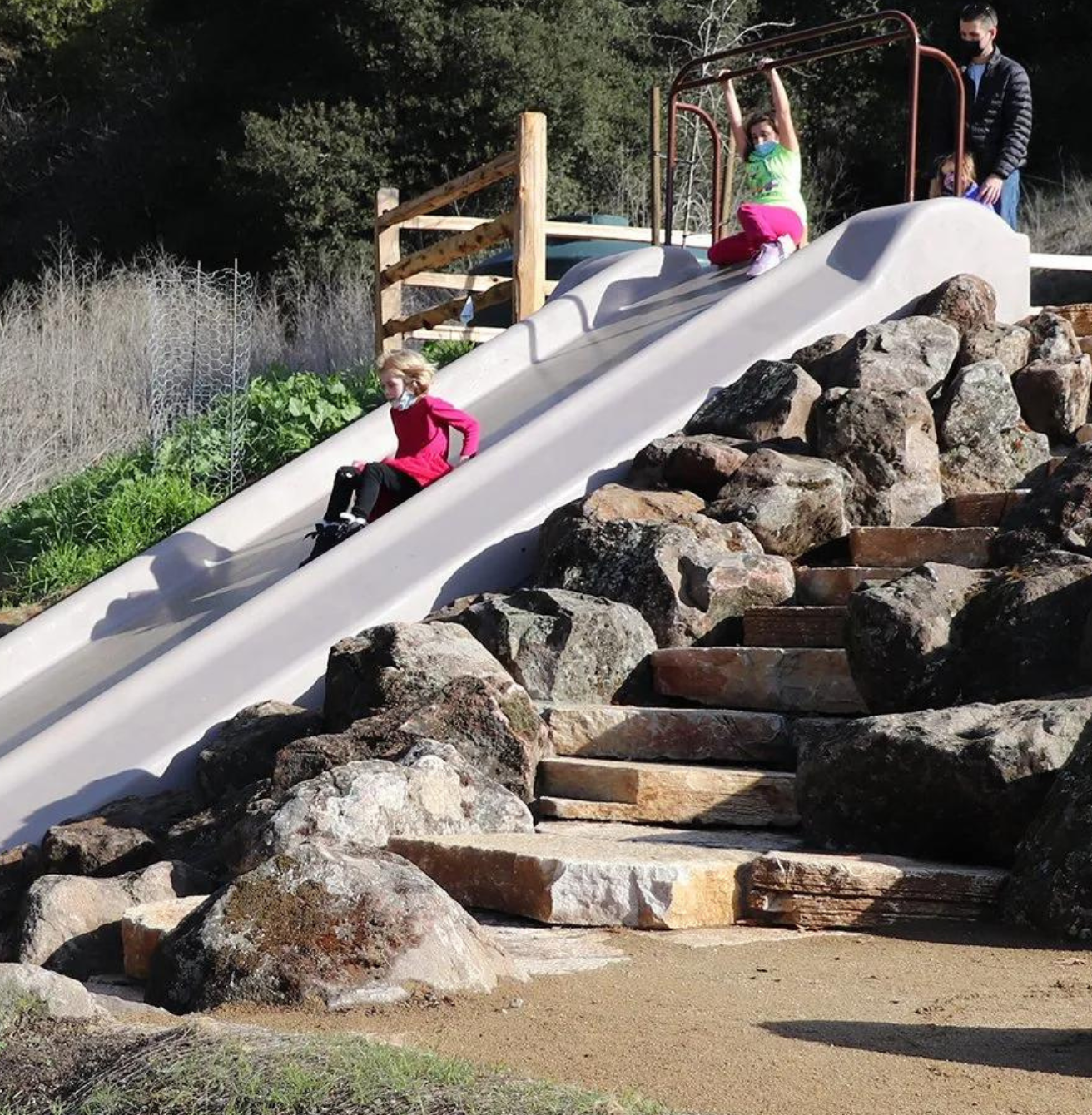
Our Embankment Slides are fast, cost-effective, and virtually indestructible!
Concrete is incredibly durable, fast sliding, and cooler than other materials. Concrete slides made in the 1970s are still in use today!
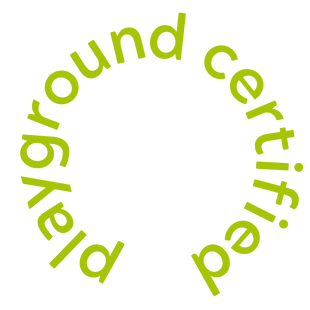
How to choose the correct slide-
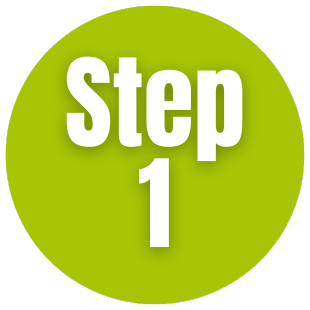
DETERMINE ADA ACCESS
At least one ground-level slide must be on an accessible route. The slide exit area must have resilient surfacing, but the top of the slide does not. An ADA transfer platform is not required, but it would be helpful.
The adjacent slope may be used as an accessible route. It is generally considered a ground-level accessible route, which means it must be 60 inches wide but may narrow to 36 inches around features.
Grass, logs, steps, and handholds can be placed on the adjacent slope without requiring impact-attenuating surfacing or use zones. However, step forms, hop rocks, or half rubber balls generally require use zones and impact-attenuating surfacing.
There is some ambiguity around ASTM and ADA standards on the slope itself. It may be worth consulting a local expert.
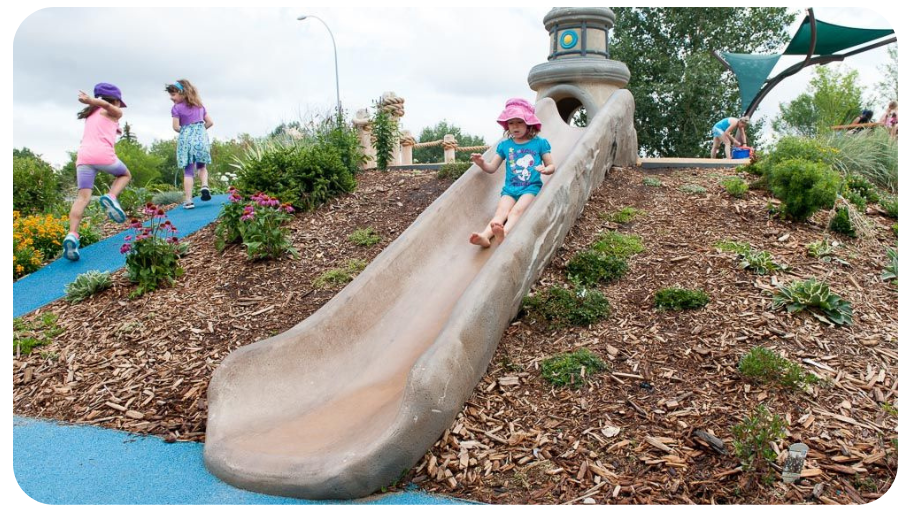
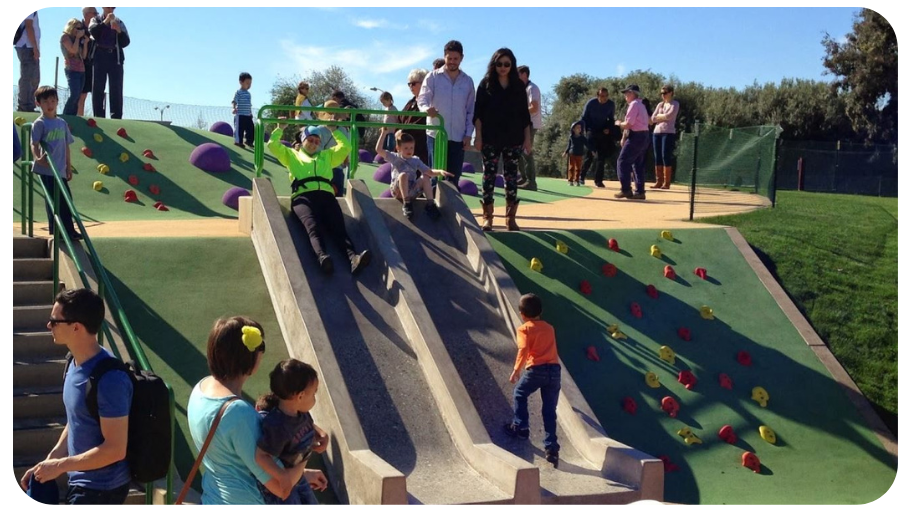
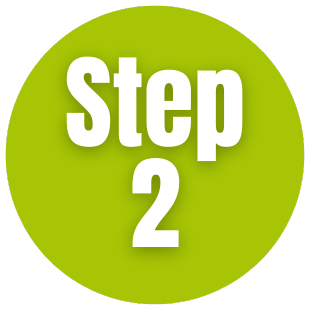
DECIDE ON HEIGHT AND WIDTH
Slides are categorized by their height, which is measured vertically between the upper and lower finish grade. The slide length is twice the slide height. All standard slide models have a 30° slide bed. Your hill or embankment will need to be at or near 30°.
The right slide height for you will depend on the height of your hill. You may consider choosing a slide that is 12 inches taller than your hill. This will provide an additional 2 feet of slide length and can be used to provide ADA access to the slide. An entrance up to 12 inches above grade at the top of the slide does not require safety surfacing per ASTM F1487.
WIDTH
For younger children, use single wide slides. Our Rock and Log sided slides are ideal for younger ages. They have a deeper radius slide bed to provide more stability. Smooth-sided single wide and divided slides can also be used with younger children. Older kids love the wider slide beds. They allow kids more freedom and variety in how they are used.
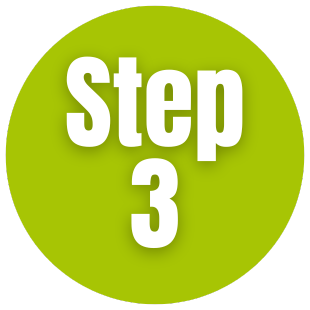
CHOOSE YOUR OPTIONS
CHOOSE THE SLIDE TEXTURE. Single wide slides may have Smooth, Bark, or Rock texture. Wider slides are available with smooth sides. This only affects the sides of the slide – all the slide top rails are etched to prevent using them as a slide surface. All slide beds are polished.
CHOOSE FROM FOUR STANDARD CONCRETE COLORS. Custom colors are available. Note that the slide beds are polished, and the sides/entrance platform are lightly etched, which affects standard concrete pigment colors.
CHOOSE FROM SIX STANDARD SIT-DOWN BAR COLORS
CHOOSE A WINGED SLIDE if you are using natural landscaping around the slide. This ensures that your 21” clear area adjacent to the slide remains free of obstructions. Wings may be smooth or rock texture.
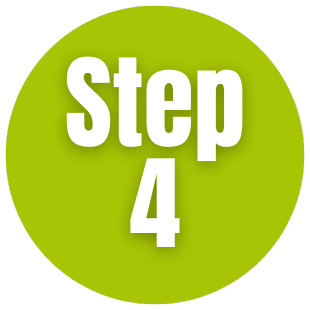
SIMPLE SET BASE OR
SITE POURED FOOTINGS
Site-poured footings may be used for tall slides or slopes that cannot be excavated. They must be designed for the soil conditions and may need to be engineered. Footings are needed at the base, top, and possibly along the slope. They must be the right height and angle to anchor the slide properly. Any deviation could make the slide unsafe.
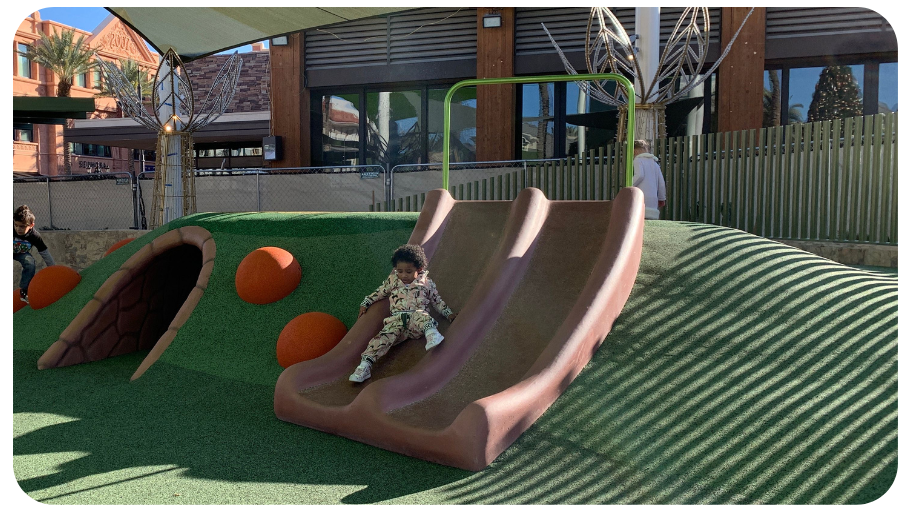
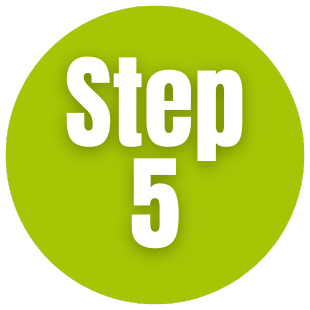
HILL ACCESSORIES
Are there other play opportunities for children as they navigate between the upper and lower parts of the hill? Ropes or Hop Rocks up the slope, for example. How about a tunnel through the hill?
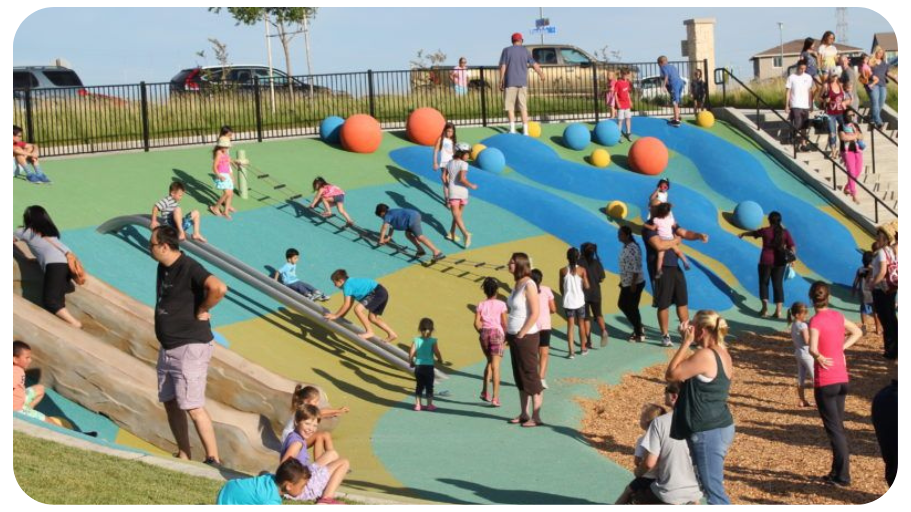
How to choose the correct slide-

DETERMINE ADA ACCESS
At least one ground-level slide must be on an accessible route. The slide exit area must have resilient surfacing, but the top of the slide does not. An ADA transfer platform is not required, but it would be helpful.
The adjacent slope may be used as an accessible route. It is generally considered a ground-level accessible route, which means it must be 60 inches wide but may narrow to 36 inches around features.
Grass, logs, steps, and handholds can be placed on the adjacent slope without requiring impact-attenuating surfacing or use zones. However, step forms, hop rocks, or half rubber balls generally require use zones and impact-attenuating surfacing.
There is some ambiguity around ASTM and ADA standards on the slope itself. It may be worth consulting a local expert.


DECIDE ON HEIGHT AND WIDTH
Slides are categorized by their height, which is measured vertically between the upper and lower finish grade. The slide length is twice the slide height. All standard slide models have a 30° slide bed. Your hill or embankment will need to be at or near 30°.
The right slide height for you will depend on the height of your hill. You may consider choosing a slide that is 12 inches taller than your hill. This will provide an additional 2 feet of slide length and can be used to provide ADA access to the slide. An entrance up to 12 inches above grade at the top of the slide does not require safety surfacing per ASTM F1487.
WIDTH
For younger children, use single wide slides. Our Rock and Log sided slides are ideal for younger ages. They have a deeper radius slide bed to provide more stability. Smooth-sided single wide and divided slides can also be used with younger children. Older kids love the wider slide beds. They allow kids more freedom and variety in how they are used.


CHOOSE YOUR OPTIONS
CHOOSE THE SLIDE TEXTURE. Single wide slides may have Smooth, Bark, or Rock texture. Wider slides are available with smooth sides. This only affects the sides of the slide – all the slide top rails are etched to prevent using them as a slide surface. All slide beds are polished.
CHOOSE FROM FOUR STANDARD CONCRETE COLORS. Custom colors are available. Note that the slide beds are polished, and the sides/entrance platform are lightly etched, which affects standard concrete pigment colors.
CHOOSE FROM SIX STANDARD SIT-DOWN BAR COLORS
CHOOSE A WINGED SLIDE if you are using natural landscaping around the slide. This ensures that your 21” clear area adjacent to the slide remains free of obstructions. Wings may be smooth or rock texture.


SIMPLE SET BASE OR
SITE POURED FOOTINGS
Site-poured footings may be used for tall slides or slopes that cannot be excavated. They must be designed for the soil conditions and may need to be engineered. Footings are needed at the base, top, and possibly along the slope. They must be the right height and angle to anchor the slide properly. Any deviation could make the slide unsafe.


HILL ACCESSORIES
Are there other play opportunities for children as they navigate between the upper and lower parts of the hill? Ropes or Hop Rocks up the slope, for example. How about a tunnel through the hill?


